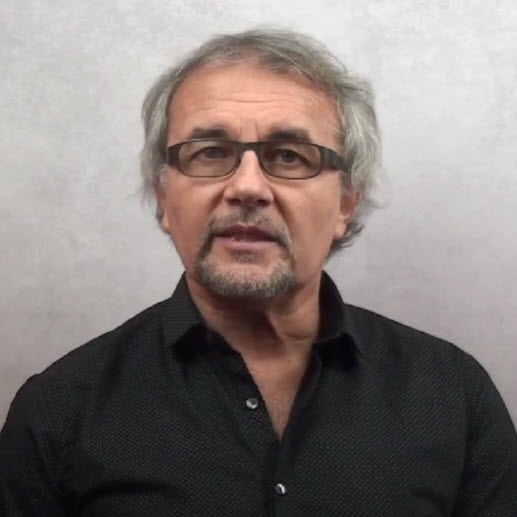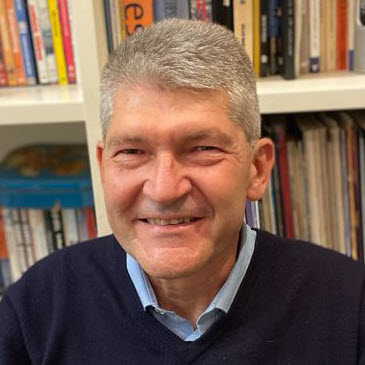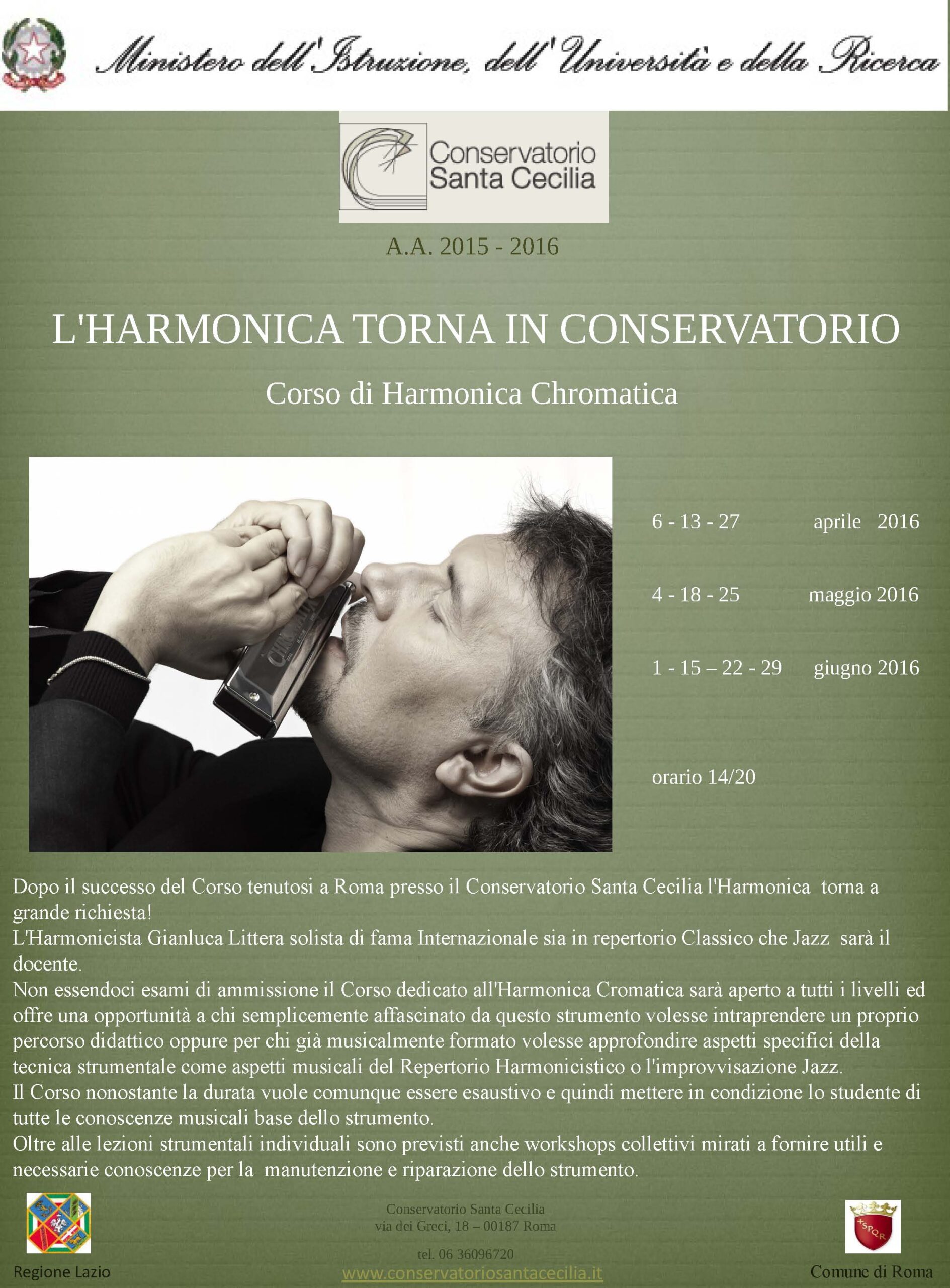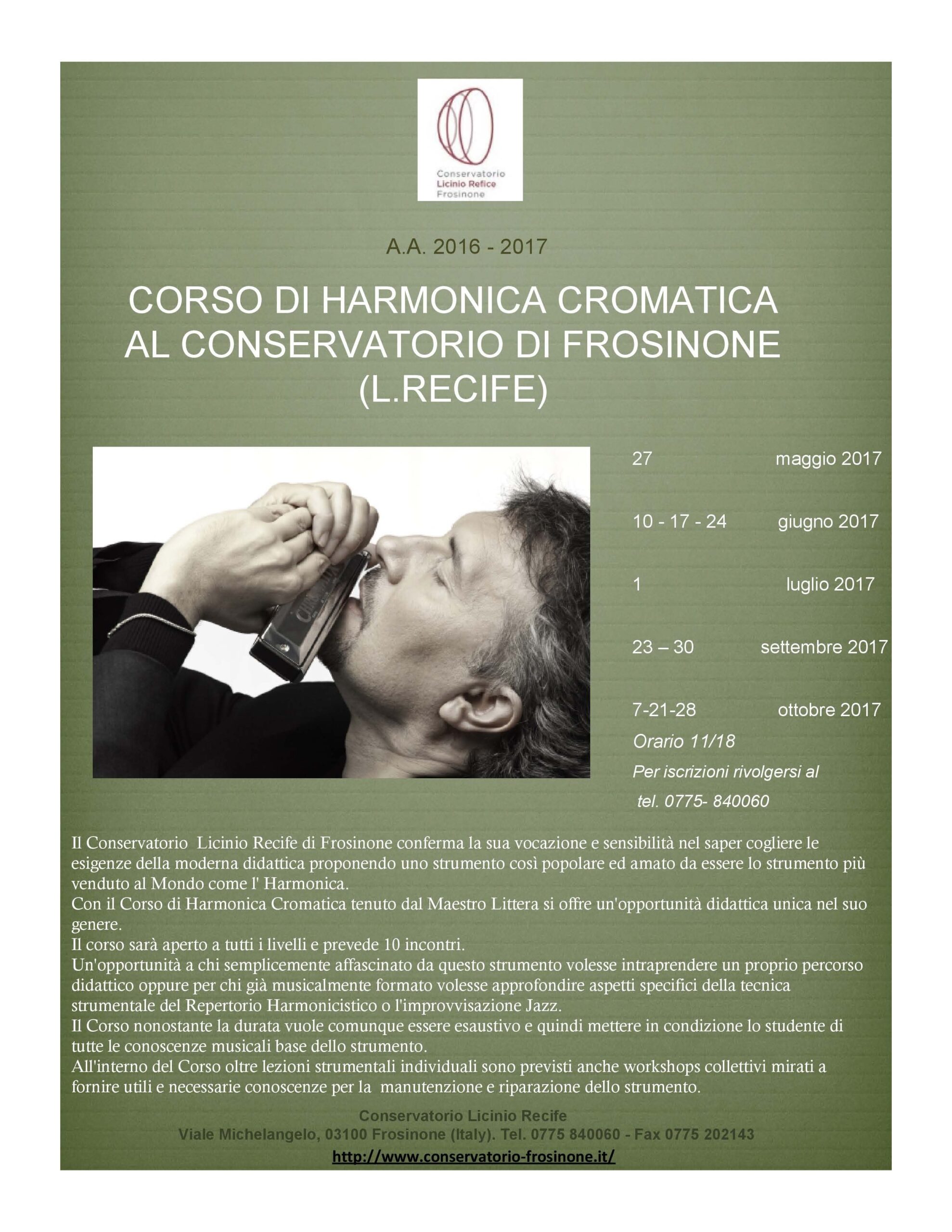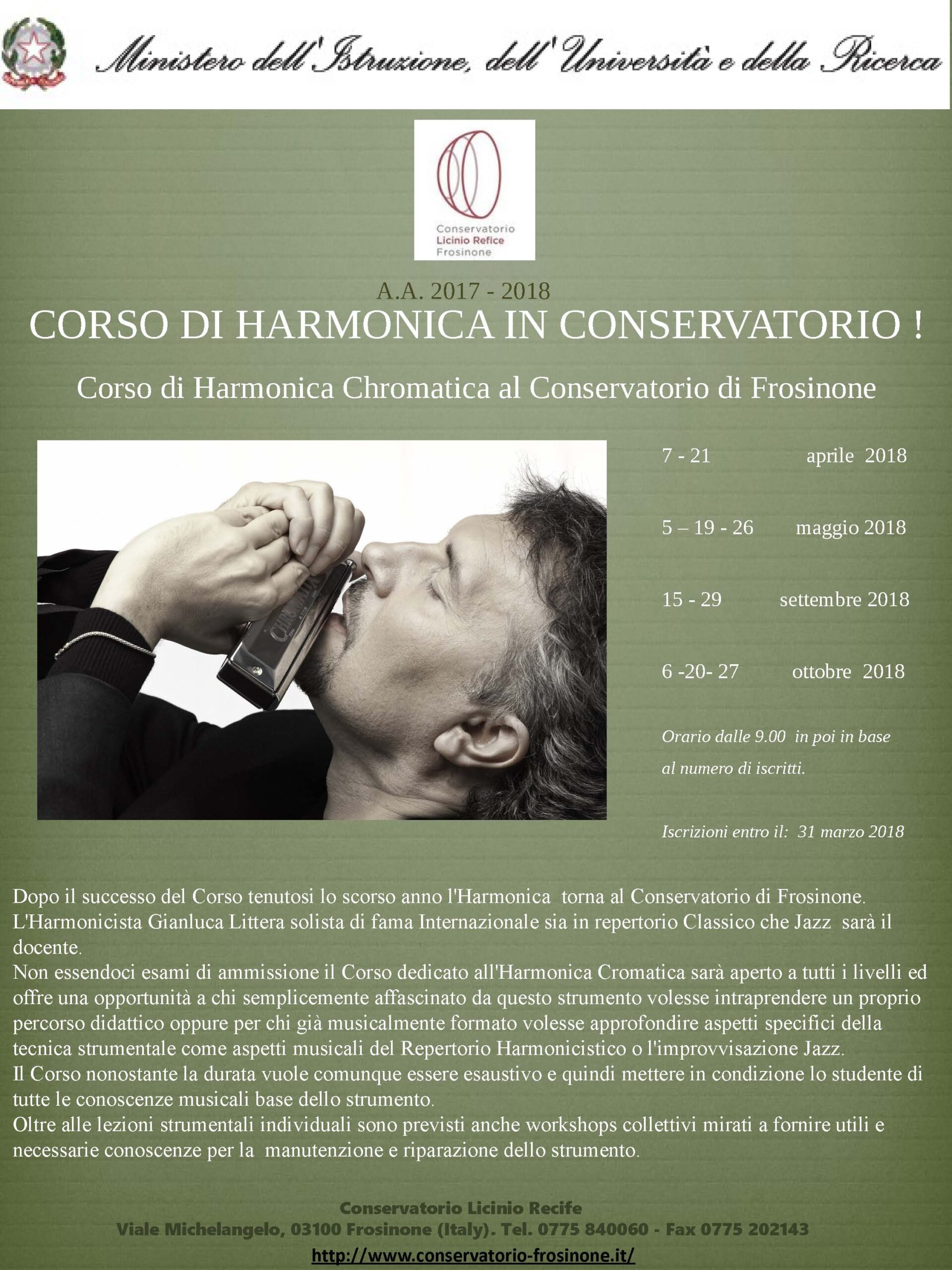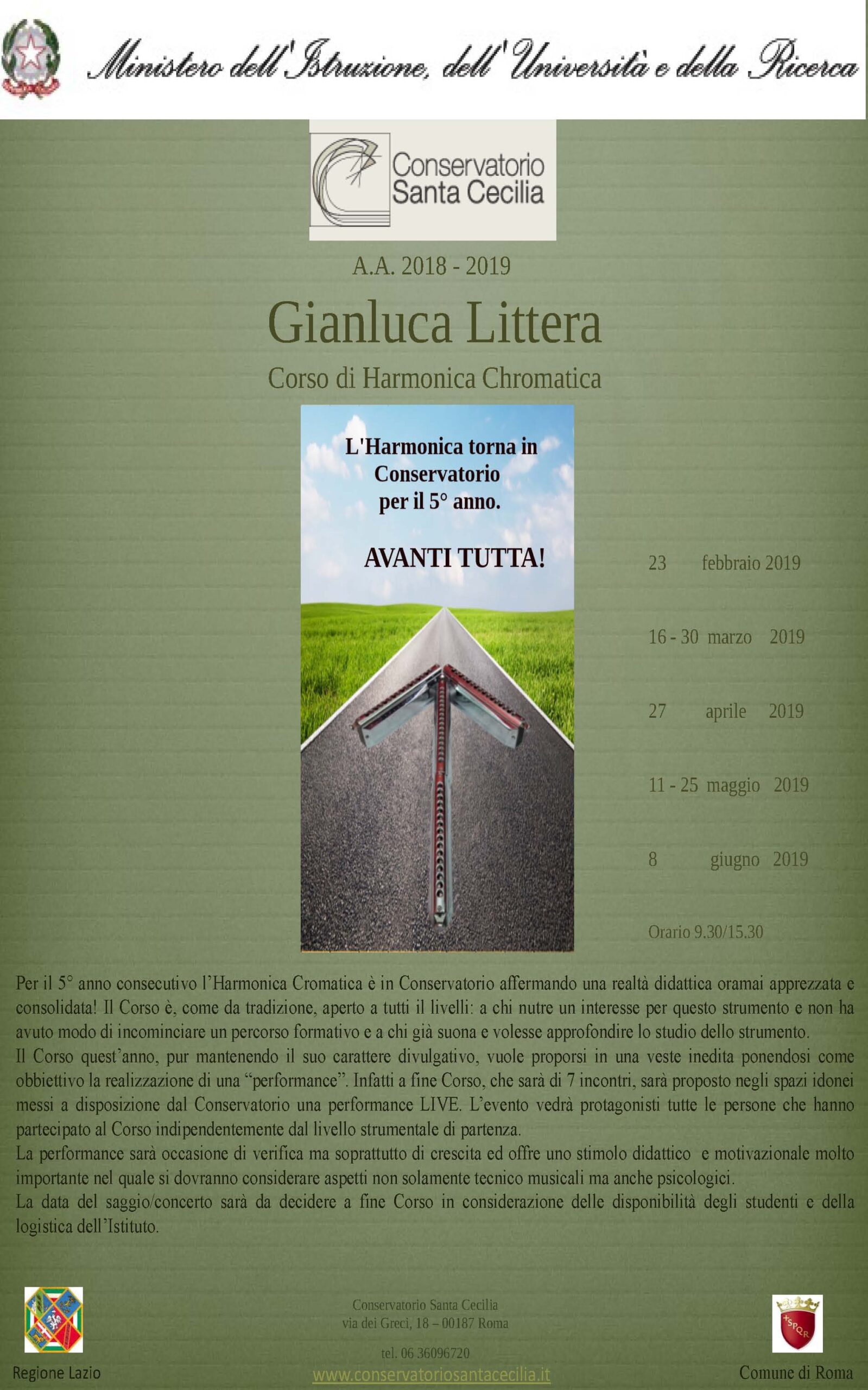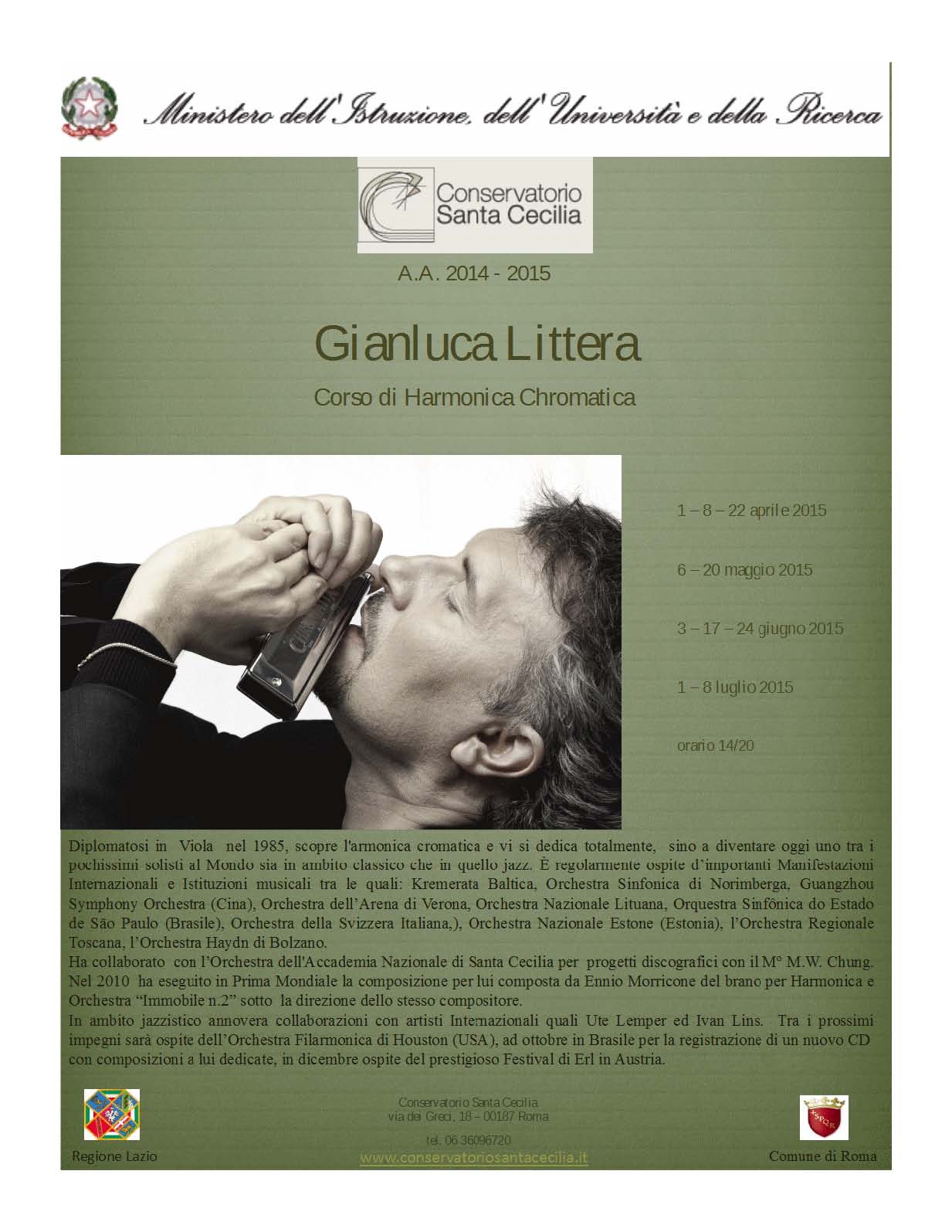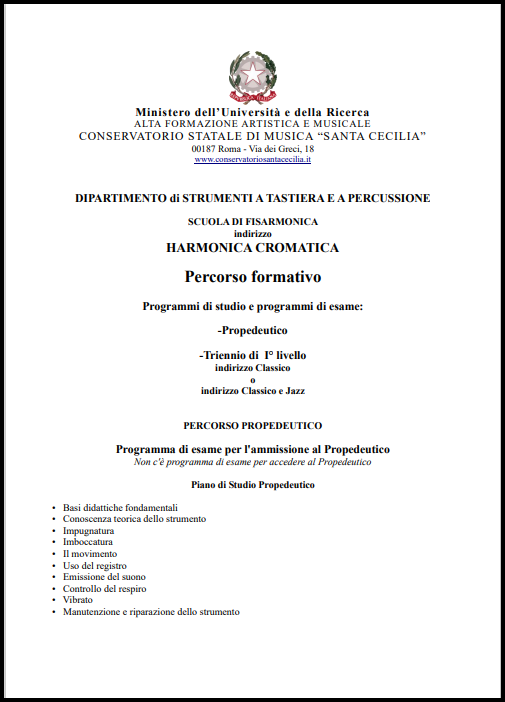Gianluca Littera was born in Rome in 1962. He graduated in Viola in 1985 at the G. Rossini Conservatory of Music in Pesaro, and afterwards he performed with many famous orchestras and conductors.
Whilst playing the Viola, he heard Toots Thieleman playing the chromatic harmonica and became fascinated by its sound and potential.
In the following years he taught himself to play the instrument, as there was no agreed way or didactic path dedicated to it.
He went on to perform as a classical soloist as well as leading his own jazz ensembles.
Following extensive research, consulting libraries, archives and contacting publishing houses, Gianluca Littera became aware of the existence of a large repertoire of music written for harmonica. Due to the absence of any educational path for the training of players, much of it has never been performed except on rare occasions in concert by the few players who have dedicated themselves to it.
These works include composers such as: Villa Lobos, Darius Milhaud, Malcom Arnold, Arthur Benjamin, Graham Wettham, Michael Spivakovsky, Robert Farnon, Alan Hovhaness, Paul Patterson, Gordon Jacob, Vilem Tauski, Vaughan Williams, Henri Sauguet…
In 1996, Gianluca recorded the Villa Lobos Concert for Harmonica and Orchestra with the Gran Canaria Philharmonic Orchestra conducted by Maestro Adrian Leaper.
Since then, his career has grown exponentially. Gianluca Littera has played as a soloist with numerous orchestras all over the world, inluding the Orchestra of the National Academy of Santa Cecilia in Rome, both in concert and in recording projects with Maestro M.W. Chung. He has performed many new works for harmonica including a work by Ennio Morricone.
In the Jazz field, he has worked with international artists such as Ute Lemper, Ivan Lins, and Eugenio Toussaint. He has toured internationally and appeared at the Shanghai Jazz Festival in China, Erl Festival (Austria), Edinburgh, Belfast etc…
In addition to his concert activity, Gianluca Littera is the author of various compositions that he has performed with numerous orchestras. In 2007 he released the CD “Sconcertango” with the chamber group “Ensemble Project”, with compositions and arrangements mainly by him.
Starting in 2014 he held harmonica courses for several years at the Conservatory of Rome Santa Cecilia and the Conservatory of Frosinone and Vibo Valentia.
In 2019 he submitted an application to the Ministry of Education – with the support of the director of the Conservatory of Rome, maestro Roberto Giuliani – for a three-year university degree for the study of the harmonica, an instrument that had been absent from the Conservatory. It was accepted and marks the official recognition of the harmonica, putting it on a par with other musical instruments. You can read more about the degree course here.
In addition to his specific teaching activities, he has taken part in academic conferences and meetings where he was able to illustrate the technical and expressive possibilities of the harmonica, the literature and history of the instrument.
The prestigious Japanese harmonica manufacturer, Suzuki, commissioned a series of 11 video tutorials in English by Gianluca on the correct approach to playing the instrument. These videos, made by Gianluca Littera, can be viewed on Suzuki’s YouTube Channel.
He has also written two books which are the backbone of the lectures and workshops used by his harmonica students and those who are interested in the instrument – “70 exercises for Chromatic Harmonica from basic to Intermediate / advanced level“ and “Theoretical and Practical Treatise for Chromatic Harmonica”.
He has also recorded many CDs.
Here is a video about his recent CD – A Breath Between the Strings (Music by Gordon Jacob, James Moody and Tony Kinsey)
Here is his Facebook page
You can read more about the degree course and how to apply on my blog page about it.
